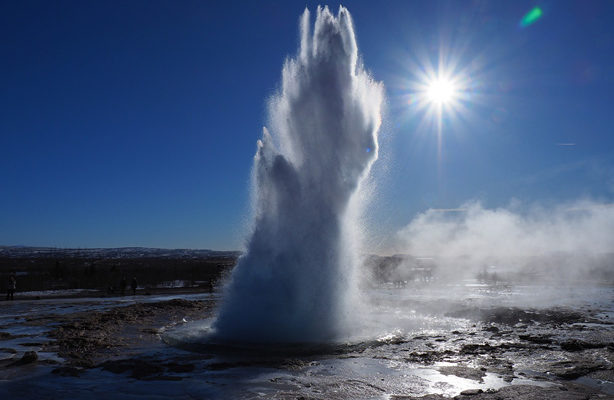
Geothermal technology provides a staggeringly high renewable energy source for a relatively paltry land area – and generally operates on a very simple principle: the temperature below the ground is higher than above the ground. The broader that range, the more energy you can effectively draw from the difference.
For instance, ‘shallow’ geothermal energy is technically (albeit conflatingly) referred to as ‘solar’ energy, since the temperature difference at this depth (around 15 metres) is less a result of the Earth’s core, and almost entirely due to solar radiation permeating the Earth surface. Ground temperatures here remain relatively stable all year round, which would make them suitable for baseload production if not for the relatively poor potential for energy production in general. However, as a natural heat store, they’re remarkably effective sources of heat itself during the winter – in effect reducing otherwise necessary energy consumption.
For raw, awesome electricity production, we need to go a lot deeper – beyond the realms of metres – to several kilometres below ground.
This is known as ‘deep’ geothermal energy, for obvious reasons. Perhaps mis-nominally, the most ideal locations for ‘deep’ geothermal energy are where the heat from the core permeates closest to the surface: that is, ‘deep geothermal energy’ is proportionally efficient to how shallow you can go before reaching ideal temperatures.
The UK has very few geothermal plants, and for good reason. What this little island gained in natural resources, it naturally lacks in thermal conductivity: that is, the composition of the stone beneath our feet simply isn’t as effective at drawing and holding heat from the core. More importantly though, most geothermal plants are built on fault lines – areas which stand on the borders of tectonic plates. This Pandora’s Box of geological disasters like earthquakes and volcanos is hot. Super-hot. Rubbing one’s hands together on a cold day helps ease the discomfort a little – rubbing millions of square km of stone together is comparable in the loosest sense of the word.
Of course, the UK isn’t known for its ash clouds, and the occasional tremor we have is more likely to elicit “was that your phone, or mine?” or at least “Oh, did you feel that?”.
That said, the potential for geothermal energy in the UK certainly exists. Several hotspots (figuratively and literally) have been known of since 2012; were they all tapped to moderate efficiency; they could generate up to 20% of the UK’s energy demand. If we were to speculate and analogise, it could be said that geothermal technology is to the UK as the last drops of yogurt is to its eater; it would be great to have it, but we have other yogurts to more efficiently open.
Sooner or later, however, this energy source will need to be tapped. We need every last drop of ‘strawberry cream’ to build a fully sustainable energy supply.
New trades career students stories >>

 (2 votes, average: 4.50 out of 5)
(2 votes, average: 4.50 out of 5)